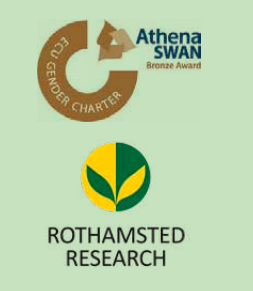It is easy to paint a bleak picture about the future of agriculture both in the UK and globally. Whether its pesticide use
and insect declines, run off and water quality, or greenhouse gas emissions and climate change, it seems like every
week there’s another negative news story about farmers and the UK countryside. But whilst widely rounded upon as
the villain, farming is uniquely placed amongst business sectors as it also holds the key to helping solve many of our
environmental challenges.
It is easy to paint a bleak picture about the future of agriculture both in the UK and globally. Whether its pesticide use and insect declines, run off and water quality, or greenhouse gas emissions and climate change, it seems like every week there’s another negative news story about farmers and the UK countryside. But whilst widely rounded upon as the villain, farming is uniquely placed amongst business sectors as it also holds the key to helping solve many of our environmental challenges. Whilst I may be hopeful, growers are still facing a fearsome trio of issues – issues that pose a serious risk not just to their profits but to the nation’s food supply. First, over-reliance upon plant protection products has led to many pests becoming resistant to insecticides. And resistant insects in our fields means spraying simply becomes an expensive activity that serves no benefit, and in fact, will just cause unnecessary environmental harm.

Some might suggest that to fill this void that we can just develop new products, but this leads to our second problem. That there are few new actives progressing along the product development pipeline, particularly in minor horticultural crops, which often have to rely upon Extensions of Authorisation for Minor Use to tackle pests. And the third issue is the increasing legal restrictions upon products used to control insect pests – and the direction of travel is such that all products currently on the market will, at some point, likely also become subject to such restrictions. Time is therefore running out on the way that we currently farm, and It makes sense for us to find alternative methods of farming that don’t require us to rely on pesticide applications every year to remain profitable.

Conservation biological control has been suggested as a tool we can deploy which can relieve some of the pressure on plant protection products. This branch of biological control works by manipulating the habitat around crops to help support a group of beneficial insects often referred to as natural enemies, which includes the likes of ladybirds, hoverflies or ground beetles that naturally prey on pests. Typically, these resources are provided by plant mixes that we put into fields, traditionally either flowering field margins or beetle banks. By providing these potential allies with shelter, nectar, alternative food and pollen, the idea is they then move into the crop to eat pests and reduce crop losses. In high-value horticultural crops, there is even more pressure than in combinable crops to combat pest outbreaks and one crop I’m interested in particularly is carrots. In the UK, we normally grow 97% of the carrots we eat (unless it’s a summer like 2018 and carrots might yield up to 30% less).
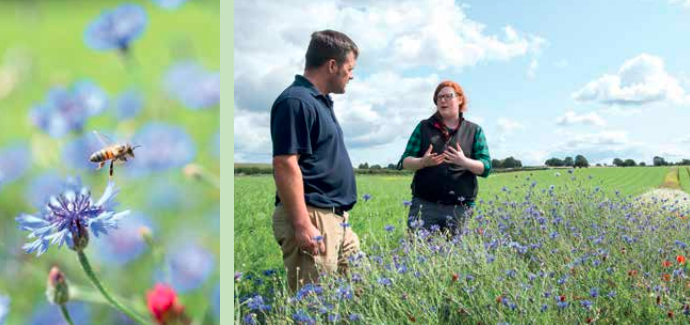
This means that any improvements to the sustainability of the crop mean real improvements to the UK countryside. For me though, this isn’t just a source of national pride, but actually is about taking responsibility for our food production and not just offsetting any environmental harm elsewhere. A big problem in carrot fields are the viruses which aphids transmit. These viruses can cause seedling death or impact carrot quality as the roots become split or visually diseased and can’t be sold. 2015 was a bad year for virus outbreaks, with carrot growers losing up to 15% of their crop. This cost the UK carrot industry £20 million, which is around 6% of the industry’s total annual sales.
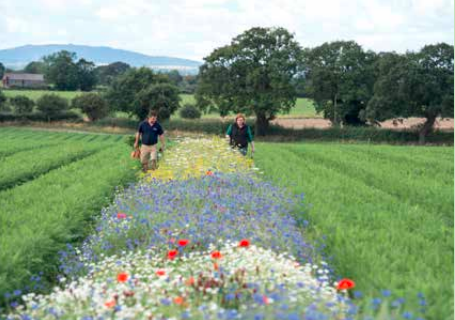
As a result of this, in 2017 a PhD project was set up with an industry focused goal from the outset: what are the best plants we can sow to support natural enemies in carrot fields? With a willing partner in carrot farmer Ben Madarasi (who had already been conducting his own trials in Huntapac fields), we narrowed the problem down further: as carrot crops sown in early April are particularly susceptible to viruses. As Huntapac typically farm rented fields only available from Spring, it hasn’t been possible to establish perennial flowering strips. Therefore, we have been sowing plant mixes in the spring as the same time as the carrot drilling; using species that we know will rapidly establish to provide vital resources to the natural enemies.
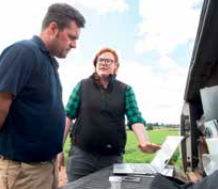
This limitation is a good example of the sort of issue that might not arise in a typical academic study, and by working with commercial farmers, we can also investigate which plant species ultimately have a positive effect on crop quality and ultimately profits. This is an important component of the work as if we are taking land out of production, ideally, we want only to offset the loss of land with increased carrot quality.
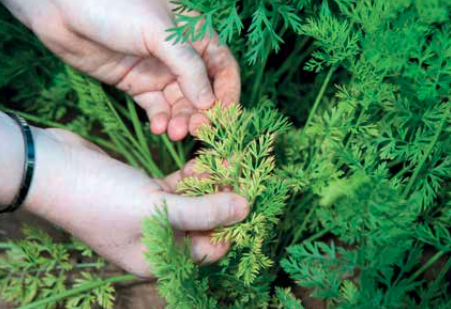
We are also studying where the best place to put these flowers within fields. We know that these flowers have a ‘spill over effect’. Where the natural enemies attracted by the mixes will move out from the flowers into the crop. But this effect decreases the further we get away from the flowering strips. So, we’ve trialled putting these into strips straight into the middle of fields, to deliver the natural enemies closer to where the pests are. We’ve found this year, working around machinery widths and Huntapac’s operational needs, that we can do this successfully! We are working to show that increasing natural enemy numbers in fields should help to reduce pesticide sprays.
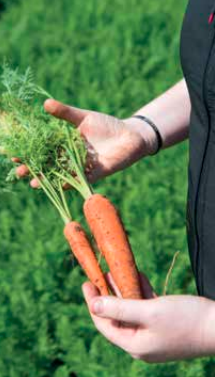
There is a growing body of literature that raises concerns about the impact of some agricultural practices, such as insecticide use and changing land use, upon wildlife like our insect populations. Even though carrots are harvested as roots that don’t benefit from pollination, these concerns have led to businesses like Huntapac wanting to farm in ways that are sympathetic to pollinators. As such, we have also been trying to support wild pollinators like bumblebees and solitary bees as these are not managed like honeybees. Without that careful management, there is a concern that wild pollinators are struggling to find enough nectar in early spring and later summer. Therefore, we are also trying to pick species for the strips that are still flowering in August and September. Readers of Direct Driller will also be aware that as the plant mixes sown include species like clovers, mustard and phacelia, there may also be improvement for soil health under the strips. Which all goes to demonstrate a key feature of these flowering strips – they are multi-functional, which will hopefully help to increase their uptake on farms.
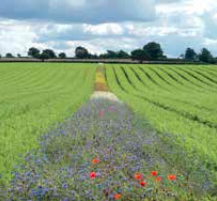
We’ve been collecting data on how well the plant mixes have established and know which ones establish quickly. The insect communities at the mixes are well studied too, we know which pollinators that have been visiting which flowers throughout the summer. We also carefully monitor the pest population to make sure we aren’t unintentionally increasing their populations too. We have now developed a technique for assessing the carrot quality next to the flowering treatments and we are finding differences between the plant mixes we are using. After two years of successful trials on Rothamsted Farm in 2018 and 2019 and a 12-hectare field trial in one of Huntapac’s commercial carrot fields in Shropshire, we are building up a body of encouraging results! Over the coming year, once we’ve had a chance to properly analyse the results, we hope to shaper our findings with the farming community – so stay tuned!
